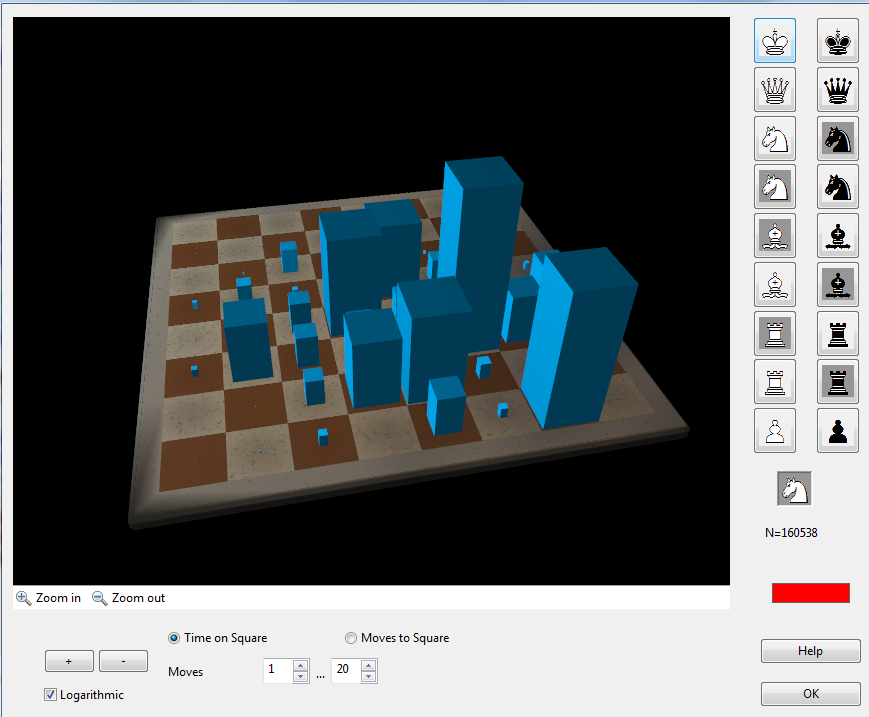|
Piece probability |

|

|
|
|
Piece probability |

|

|
Piece probability
List window: Statistics - Ribbon Piece probability (or right-click, or Shift-S)

For any group of games, e.g. an openings system, this function generates statistics of the movements of each piece on the board.

Piece probability graphically displays the squares on which a piece tends to move or stay. This is particularly useful in opening training, where there are important conclusions to be drawn. For instance, if you discover that in a set of games from the Ruy Lopez Marshall Attack (C89), in which Black was successful, he tended to move his queen to h4, h5 and h3, his king's rook to the e-file and especially e6 (to support the attack with the queen) and his pawns to f5, f4 and g5, then this may give you a completely new insight into the ideas behind the opening system.
![]() Piece symbols
Piece symbols
The probability display is always for an individual piece, which you click on the right. You must differentiate between the queen- and kingside pieces, i.e. the dark and light-squared bishop, the king- and queenside knight and rook. Below the board there are some control buttons with which you can change the perspective of the board and the scale of the columns (click “+” or “–” if they are too large or small).
![]() Time on square/Moves to square
Time on square/Moves to square
The size of the columns signify the relative frequency with which a piece was on a given square. You can switch between the amount of time it spent on that square and how often it was moved to the square (i.e. ignoring how much time it spent there).
![]() Moves from ... to
Moves from ... to
This allows you to display statistics for only a certain phase of the game.
![]() + / –
+ / –
Changes the scale of the graphics.
![]() Logarithmic
Logarithmic
The logarithmic display makes it easier to display larger fluctuations.